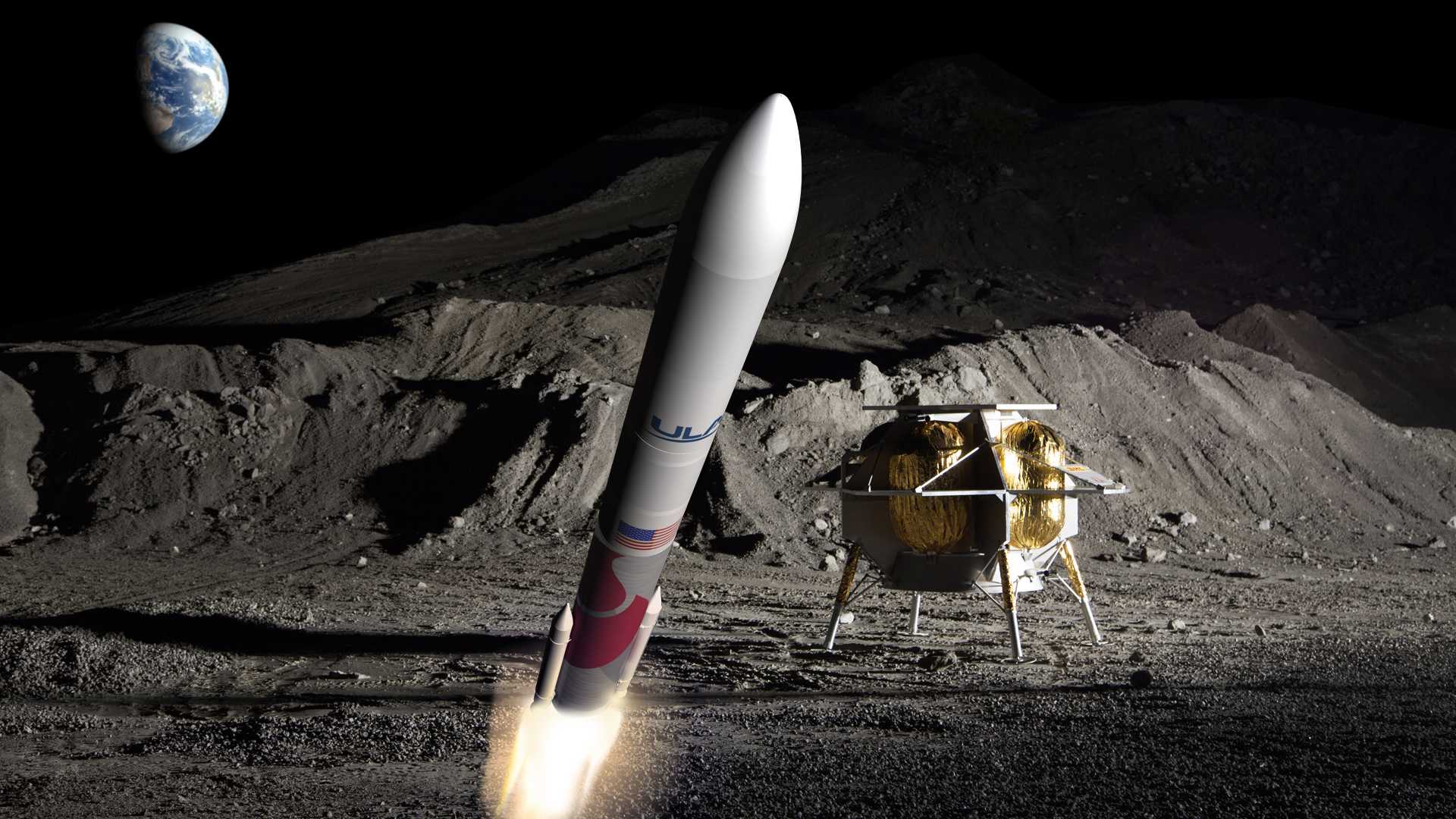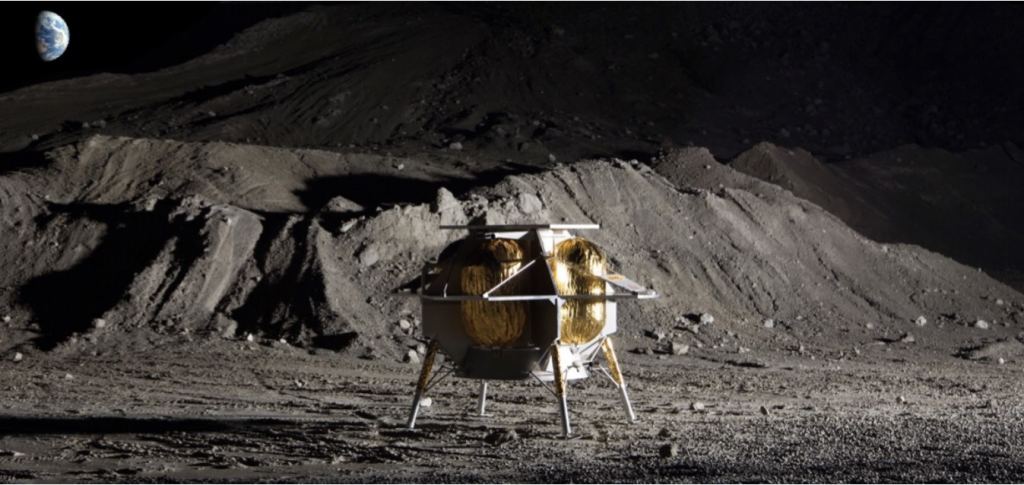

Artist's impression of the Vulcan Centaur Credit: ULA/Astrobiotic
In May of 2019, NASA’s Commercial Lunar Payload Services (CLPS) selected Astrobotic to fulfill a contract to deliver 14 payloads to the Moon by 2021. The Pittsburg-based aerospace company plans to do this using their Peregrine Lander, a robotic lunar spacecraft that is capable of delivering payloads to the Moon for the competitive price of $1.2 million per kilogram (~$544,300 per lbs).
To get the Peregrine lander and NASA’s payloads to the Moon, Astrobiotic recently announced that it would be relying on United Launch Alliance (ULA) to provide launch services. ULA will do this using their next-generation heavy-lift launch system known as the Vulcan Centaur rocket, which will also be the inaugural launch of this new vehicle.
Since it was founded in 2007, Astrobiotic has executed over 30 contracts (some of which are ongoing) with NASA and Airbus Defense and Space. In addition, the company is an official partner with NASA’s Lunar Cargo Transportation and Landing by Soft Touchdown (CATALYST) Program and received corporate sponsorship from the German courier enterprise DHL.


But it is with this latest contract that Astrobiotic will be making history. The first launch will not only be the inaugural flight of the Vulcan Centaur rocket, it will also be the first time since the Apollo era that an American lunar lander has reached the Moon. Moreover, Astrobiotic and ULA will be facilitating NASA’s to return to the Moon as part of Project Artemis – which will send the first woman and next man to the Moon by 2024.
Astrobotic CEO, John Thornton, expressed the following about the deal his company secured in a recent ULA press statement:
“We are so excited to sign with ULA and fly Peregrine on Vulcan Centaur. This contract with ULA was the result of a highly competitive commercial process, and we are grateful to everyone involved in helping us make low-cost lunar transportation possible. When we launch the first lunar lander from American soil since Apollo, onboard the first Vulcan Centaur rocket, it will be a historic day for the country and commercial enterprise.”
The Peregrine lunar lander measures 1.9 m (6.2 ft) tall and 2.5 m (8.2 ft) wide and will be delivering a 90 kg (~200 lbs) payload on its first run. The spacecraft has five engines arranged in a concentric configuration with the spacecraft’s central axis. Each is capable of generating 667 N of thrust and which act as both the spacecraft’s main engine and maneuvering thrusters.
At present, the Peregrine lander is scheduled to launch from Space Launch Complex-41 at Cape Canaveral Air Force Station in Florida in June of 2021 (with a planned landing on the Moon by July of 2021). The mission will be the culmination of Astrobiotic’s 12-year history as a pioneer in the development of commercial lunar delivery systems.
Along with the 14 NASA payload, Astrobiotic is scheduled to deliver 28 payloads to the Moon from 8 different countries. These range from resource development and scientific investigation packages to technology demonstrators, exploration missions, and even marketing, arts, and entertainment payloads.
The mission will also be a milestone for ULA, which has a long history of executing contracts for NASA, the US Air Force, and other government and commercial entities. The company has launched exploration missions to the moon, to the Sun, and every planet in the Solar System. According to Tory Bruno, ULA’s president and CEO, it is therefore fitting that the company is playing a role in returning astronauts to the Moon:
“This partnership represents a true ‘whole-of-government’ approach to how our nation is leading the world in space: NASA contracted with a commercial company to land on the moon, who then went on to contract with a commercial company for a rocket built to serve the national security space market. This highlights the power of our American system of partnership between government and industry to solve the toughest problems and the greatest of our human aspirations.”
In accordance with NASA’s Project Artemis, the first crewed mission since the Apollo Era will be landing on the surface on the Moon by 2024. Between now and then, a number of launches are scheduled that will provide the logistical and technical support necessary for this eventual “return to the Moon”.
Partnerships like this, between governments and commercial launch providers, will also be intrinsic to ensuring that we are able to stay there this time.
Further Reading: ULA, Astrobiotic
If you've ever looked at Mars through a telescope, you probably noticed its two polar…
Our Solar System is in motion and cruises at about 200 kilometres per second relative…
Late is better than never for the ‘Blaze Star’ T Coronae Borealis. It was on…
A planet's history is told in its ancient rock. Earth's oldest rocks are in the…
Data from the Chinese rover Zhurong is adding to the pile of evidence for oceans…
New information is pushing Asteroid 2024 YR4 off of our front pages. Initial estimates gave…